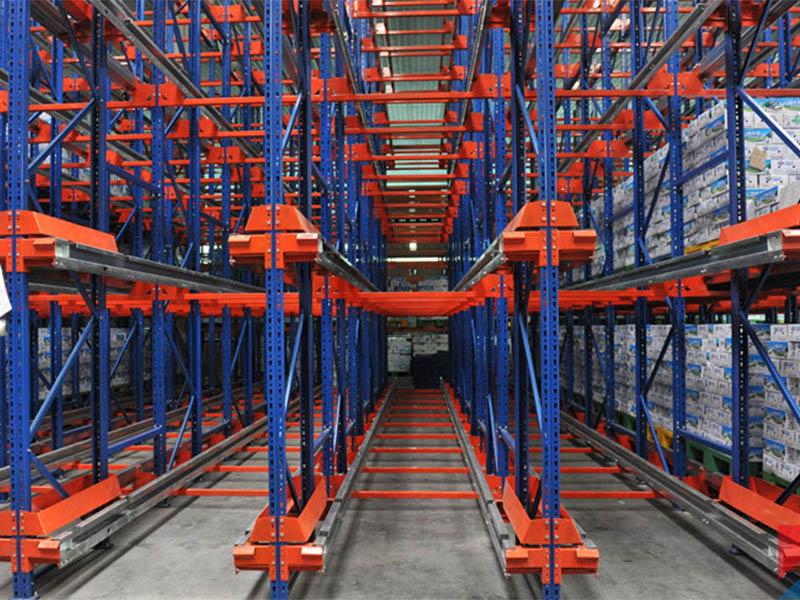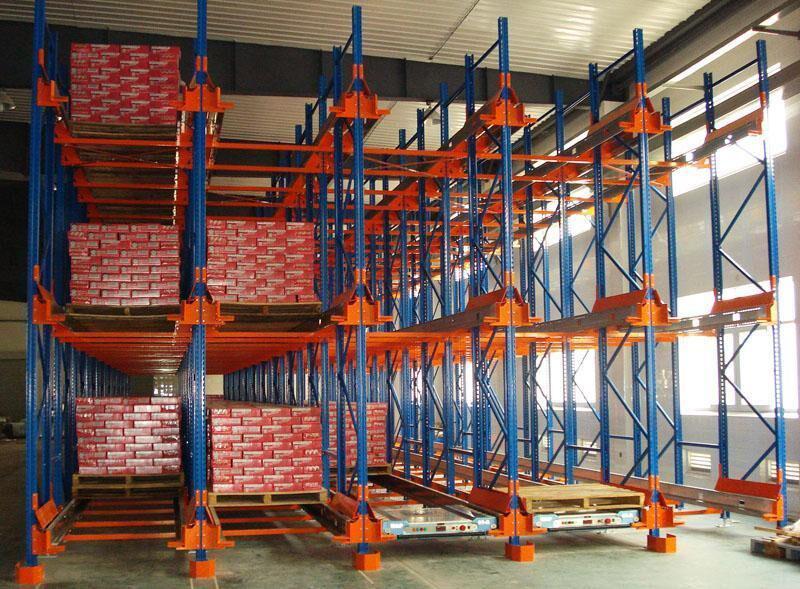In the world of logistics, manufacturing, and retail, efficiency is currency. The backbone of this efficiency, often overlooked, is the humble yet incredibly sophisticated shelving and racking system. These systems are far more than just metal frames to hold goods; they are engineered solutions designed to maximize space, improve inventory accessibility, enhance safety, and ultimately, drive profitability. Whether you're running a sprawling distribution center, a compact retail backroom, or an automotive workshop, choosing the right storage system is a critical business decision.
This comprehensive guide will delve into seven essential aspects of shelving and racking systems, providing you with the knowledge needed to select, implement, and maintain the optimal setup for your specific operational needs.

Understanding the Different Types of Shelving and Racking Systems
The first step in selecting the right solution is understanding the vast array of options available. Each type of shelving and racking system is designed for specific applications, load capacities, and inventory profiles.
Selective Pallet Racking: This is the most common and versatile type of system. It allows direct access to every single pallet, making it ideal for warehouses with a high number of SKUs (Stock Keeping Units) where quick and frequent access to any product is necessary. It typically consists of upright frames and horizontal beams, creating bays for pallets.
Drive-In/Drive-Through Racking: Designed for high-density storage of homogeneous products. In this system, pallets are stored on rails, and forklifts drive directly into the rack structure to place or retrieve loads. Drive-in racking has an entrance on one side, while drive-through has entrances on both ends, functioning on a FIFO (First-In, First-Out) basis. This is perfect for cold storage or storing large quantities of the same product.
Push-Back Racking: Another high-density solution, push-back systems operate on a LIFO (Last-In, First-Out) basis. Carts are nested on inclined rails. When a new pallet is loaded, it pushes the existing pallets back. When a pallet is removed, the next one moves forward automatically. It offers better selectivity than drive-in systems while still providing significant space savings.
Pallet Flow Racking: This system uses a FIFO inventory method. Pallets are loaded from the rear on a slightly inclined track with wheel or roller conveyors. Gravity gently moves the pallets to the front unloading position. It's excellent for perishable goods or products with expiration dates where stock rotation is crucial.
Cantilever Racking: Specifically designed for storing long, bulky, or irregularly shaped items like timber, pipes, furniture, or sheet metal. It features a vertical column with arms that extend outward, providing unobstructed access to the stored items without the interference of front vertical posts.
Mobile Shelving Systems: For archival storage or storing smaller items in high density, mobile systems are ideal. Units are mounted on carriages that move on rails, eliminating multiple aisles. Only one aisle is created at a time, dramatically increasing storage capacity in a given footprint.
Shelving Units (Bolted or Clip): For smaller parts, tools, or boxes that aren't palletized, standard industrial shelving is the answer. These systems are highly customizable with various shelf heights and accessories like drawers, doors, and dividers.
Materials, Design, and Structural Integrity
The effectiveness and safety of any shelving and racking system hinge on its design and the materials used in its construction.
Materials: The vast majority of commercial systems are constructed from high-grade steel, known for its exceptional strength-to-weight ratio. The steel is often roll-formed into specific shapes to maximize load-bearing capacity and is protected by a durable powder-coat finish to resist chipping, scratching, and corrosion. For lighter-duty applications or corrosive environments (e.g., food processing, chemical storage), stainless steel or epoxy-coated systems are available.
Engineering and Load Capacity: Reputable manufacturers engineer their systems to precise standards. The load capacity is not a guess; it's a calculated rating based on the beam and upright design, steel gauge, and connector type. It's crucial to distinguish between per-beam and per-level capacity. Always adhere to the manufacturer's specified load limits to prevent catastrophic failures.
Design Considerations: Modern systems are designed with versatility and safety in mind. Features like safety locks on beams prevent accidental dislodgement, and reinforced column designs provide superior seismic resistance in earthquake-prone areas. The design must also account for the building itself, including floor conditions, clear ceiling heights, and the location of sprinkler systems.

The Critical Role of Installation and Ongoing Maintenance
A perfectly designed shelving and racking system is only as good as its installation and upkeep. Neglecting these aspects is a primary cause of accidents and premature system failure.
Professional Installation: While some light-duty shelving can be DIY, professional installation is non-negotiable for all pallet racking systems. Certified installers ensure that:
Uprights are perfectly plumb and aligned.
All bolts are torqued to the correct specification.
The system is level and securely anchored to the floor.
All safety protocols are followed during assembly.
Routine Inspections and Maintenance: Daily operations inevitably lead to wear and tear. A formal inspection program is essential.
Weekly Visual Checks: Operators should be trained to report any visible damage, such as bent beams or dislodged safety locks.
Formal Quarterly/Annual Inspections: A designated safety officer or a third-party expert should conduct a thorough inspection. They will check for:
Beam Damage: Dents or twists in the beams where they connect to the uprights.
Upright Damage: The most critical area is the connection point near the floor. Any significant deflection (usually over ½ inch) is cause for immediate concern and repair.
Alignment: Ensuring the entire structure remains straight and true.
Anchor Integrity: Verifying that floor anchors remain tight.
Repair Protocols: Damage should never be ignored. Professional repair solutions, like structural column guards or beam-end reinforcements, can often restore a damaged section to its original strength, avoiding the cost of a full replacement.
The Impact of Automation and Technology Integration
The shelving and racking system is no longer a static structure. It has become a dynamic component of the modern automated warehouse.
Automated Storage and Retrieval Systems (AS/RS): These are computer-controlled systems that automatically place and retrieve loads from defined storage locations. They integrate seamlessly with high-density racking, using robotic shuttles, cranes, or retrievers. The benefits are immense: unparalleled density, extreme accuracy, reduced labor costs, and enhanced worker safety by removing forklifts from the storage process.
Warehouse Management System (WMS) Integration: A WMS acts as the brain of the warehouse. When integrated with your racking layout, it doesn't just know what you have in stock; it knows precisely where it is located (down to the specific bay and level). This allows for optimized picking paths, efficient slotting (placing fast-moving items in the most accessible "golden zone"), and real-time inventory tracking.
The Rise of Carton-Flow and RFID: Technology extends to smaller parts. Carton-flow systems within shelving units use gravity rollers for efficient picking. Integrating Radio-Frequency Identification (RFID) tags on bins and shelves allows for instantaneous inventory counts without line-of-sight scanning, drastically improving inventory accuracy.
H2: How to Choose the Right System for Your Specific Needs
Selecting the ideal shelving and racking system is a strategic process. There is no one-size-fits-all solution. You must consider several key factors:
Inventory Profile: What are you storing? (Palletized goods, small parts, long items?) What are the dimensions and weights of your loads? What is your total SKU count?
Inventory Turnover: Do you operate on FIFO or LIFO? How quickly does your stock move? Fast-moving items need high-accessibility systems like selective racking, while slow-moving, bulk items are candidates for high-density systems.
Available Space: Precisely measure your building's footprint and clear height. The goal is to maximize cube utilization by building up, not just out.
Equipment and Budget: What type of forklifts or material handling equipment do you use (or plan to use)? The type of equipment dictates the required aisle width. Finally, you must perform a cost-benefit analysis, balancing the initial investment against long-term gains in efficiency, safety, and space utilization.
Future Growth: The best systems are scalable and adaptable. Choose a solution that can be reconfigured or expanded as your business evolves.
Prioritizing Safety in Every Aspect of Operation
Safety must be the foremost priority when working with and around shelving and racking systems. A collapse or accident can cause severe injury, product loss, and significant downtime.
Proper Training: All personnel who operate forklifts near racks or pick from shelves must be thoroughly trained. This includes understanding load limits, safe stacking practices, and how to maneuver equipment without striking the structure.
Use of Safety Accessories: A range of accessories is available to enhance safety:
Column Protectors: Guards placed around base plates to prevent impact from forklifts.
Pallet Supports/Wire Mesh Decking: Prevents pallets or individual boxes from falling through the beams.
End-of-Aisle Guards: Protects the end frames of your racking from collisions.
Load Signs: Clearly display the maximum permissible load for each beam level.
Adherence to Guidelines: Follow standards and guidelines set by organizations like OSHA (Occupational Safety and Health Administration) and RMI (Rack Manufacturers Institute) to ensure a compliant and safe working environment.
The Future of Shelving and Racking Systems: Sustainability and Smart Design
The evolution of shelving and racking systems continues, driven by trends in sustainability and data-driven optimization.
Sustainability: Many manufacturers now use a high percentage of recycled steel in their products. Furthermore, the durability and reconfigurability of systems mean they have a long lifespan, reducing waste. The efficiency gains from optimized storage also contribute to a smaller carbon footprint through reduced energy use in warehouses and fewer delivery miles due to better inventory management.
Data-Driven and Ergonomic Design: Systems are being designed with even more input from data analytics to create the most efficient picking paths and storage layouts. Ergonomic design is also a major focus, with adjustable shelving and pick-to-light systems reducing physical strain on workers and improving overall productivity.
In conclusion, shelving and racking systems are a foundational investment for any business that handles physical inventory. By carefully considering the type, design, installation, and integration of technology, you can transform your storage area from a cost center into a powerful engine for growth, efficiency, and competitive advantage.







